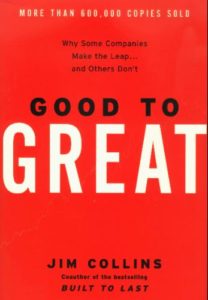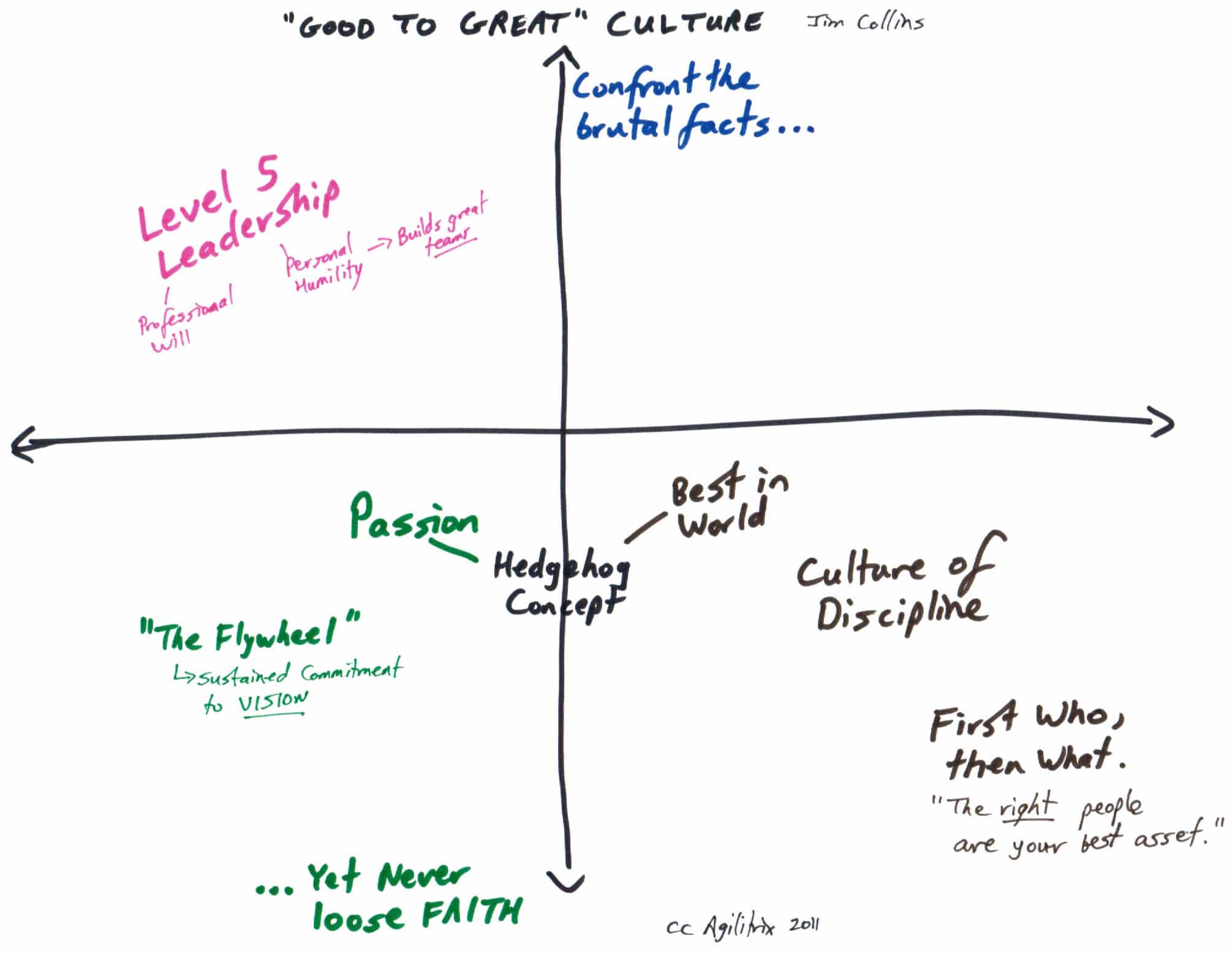 Some years ago, my book of the year was, “Good to Great: Why some companies make the leap … and others don’t” by Jim Collins. It is a research-based exploration of what it takes to turn ordinary companies into great companies.
Some years ago, my book of the year was, “Good to Great: Why some companies make the leap … and others don’t” by Jim Collins. It is a research-based exploration of what it takes to turn ordinary companies into great companies.
A very practical and relevant question is: how does it fit in with Agile? If we are going to the bother of undergoing a transformation, let’s at least make sure we have the right ingredients.
I make the case that an effective transformation needs to bring elements from outside of these systems in order to be great.
First, let’s consider where Good to Great principles align with cultural analysis.
Schneider Model of Good to Great
The following analysis is based on the Schneider Culture Model.
We see that the clear focus is on Cultivation and Competence cultures.
Competence. Good to Great speaks of companies that seek to be the best in the world. They get the right people on the bus. And the wrong people off the bus. Hire the best and the rest will take care of itself. Companies such as Netflix have taken this to an extreme with amazing results. Built on the people is a culture of focus and discipline to be the best.
Cultivation. Good to Great companies have a vision of being the best in something and the passion to pursue it. A sustained commitment to the vision allows such companies to work relentless year by year to build towards success. There is also a strong sense of the need to develop people, perhaps in different roles.
One of the phrases I love most from the book is: “Confront the brutal facts … yet never loose faith.” The idea here is to make visible and deal with all problems – no matter how discouraging or painful – and keep faith that success will come eventually. Faith in success is the key ingredient that allows one to examine the really tough issues.
Level 5 leadership is about unassuming leaders who build great teams around them.
Why it Matters
Agile, even XP, is completely silent on competence as an important trait in company culture. In fact, this notion is at odds with singing kumbaya and holding hands. But as Ken Schwaber said, “If you have a crappy to team, at the end of a sprint, you will get an increment of crap.” And a lot of companies I see are filled with mediocrity. So, if we really want to help build great companies, we need to stretch beyond Agile. Yup, this means firing people. “The most common failure of great managers is not firing people soon enough.”
An even more interesting notion is that the quality of a transformation is limited by the leadership. So, who’s in charge and what they want to accomplish becomes really important. To quote one CTO who wanted the benefits of Agile but was not interested in personal change: “I didn’t hire you to give me feedback on how I treat my staff.”
So, it’s a great book and helps me see the larger business context.
Or Not?
Please check out some of the great comments below – like how some of these companies crashed and burned after the book was written.



